 Read the peer reviews for this feature.
Read the peer reviews for this feature.
Download the graphs for this feature.
Any review of rail’s successes and failures over the past 20 years or so must start with a brief recap of what those changes were. I guess we can all just about remember that back in the early 1990s the European economic and political climate strongly favoured vertical separation of infrastructure and operations. The drive was to create conditions enabling more competition within countries and across national borders within the European Union.
BR Board Chief Executive John Welsby presided over a unified, nationalised organisation that owned all the assets you need to run a railway - trains, stations and infrastructure. Yes, there were business units shaped around the different markets served, but there was still a single line of command right to the top of the organisation, and hence directly to government.
As we all know, the British public has a love-hate relationship with its railways. With strong trade unions, what was seen as generally poor levels of customer service and reliability, and with what seemed like bottomless demands for more money to operate, maintain and improve the network, the British government was casting around for a mechanism to get ‘the railway problem’ off its hands once and for all.
The result was the Railways Act of 1993, which in summary separated out the twin key roles of infrastructure management and train operation. A single national infrastructure provider was created and a multiplicity of passenger and freight operating companies established, with the freight companies sold outright and the passenger businesses franchised.
In the event, the process of selling the franchises went extremely well, and Railtrack - originally intended to be a public sector company - was privatised. All appeared good for a time, but gradually cracks began to show.
Railtrack struggled to successfully deliver on its outsourced maintenance and renewals activities, and overreached itself on the West Coast Route Modernisation programme. Meanwhile, a series of major train accidents focused attention on the mounting deficiencies in the way that the network was being run. Eventually, the government of the day took the decision to push Railtrack into administration, and its successor Network Rail was established on a not-for-profit basis.
By 2006 the industry had regained some stability with the implementation of the 2005 Railways Act, which abolished the Strategic Rail Authority and moved its work into the Department for Transport. Structurally it has since remained largely unchanged, give or take the creation of the Rail Delivery Group in response to the McNulty Report, and so has effectively lasted ten years already. Quite a long time in railway organisational terms!
The passenger companies can be described as ‘asset light’. In other words, they don’t own the trains, they make little investment in infrastructure, and they are there to make a profit on the difference between revenue and costs over a defined period of time. In the passenger game, the competition has until now been largely for the market rather than in the market.
And franchising has been a highly competitive business. Margins that 20 years ago were typically 5%-7% are now down to an average of 2%. Many of today’s franchises are struggling to make a profit after paying the agreed premium or receiving the agreed subsidy from the Government.
But it’s fair to say that much of the past 20 years has been a railway success story.
- Train ridership, admittedly helped by road congestion and high fuel costs, has more than doubled.
- There has been major investment in increasing capacity on the network, and the majority of trains are now better maintained and more reliable than ever.
- The passenger experience - as seen through modernised stations, new or refurbished trains, and customer service - has been transformed, and customer satisfaction is at relatively high levels. Punctuality, while not as good as desired, is generally much better than in the last days of British Rail. And while fares vary hugely according to time of day and week, class of travel, degree of flexibility of ticket, and by operator, the average fare paid per mile travelled has increased slower than inflation, so many passengers are getting very good deals.
- Freight companies have survived the collapse of ‘King Coal’ and have aggressively moved into intermodal, as it has grown. They all compete effectively with road hauliers and all are just about making money in the process, although margins tend to be tight.
- Operational safety has been radically improved, with the last passenger fatality in a rail accident occurring over nine years ago and the British network now rated as the safest in Europe. Occupational health and safety has also improved, although perhaps not as much as many feel should be the case.
So there is much to be pleased about - perhaps even proud of - that has been accomplished over the past 20 years. But despite the booming revenues and soaring demand, railway finances remain a persistently difficult issue for government. So let’s take a look at the current high-level financial position of the industry.
The chart on the next page shows the principal money flows in the industry. Turnover has more than doubled in the past ten years or so, and the proportion of funding coming from the Government has reduced from around 60% to around 40% in that time. In total, however, and in cash terms, Britain’s railways are costing the Government roughly the same today - nearly £4 billion a year - as they did 20 years ago.
Why is this? Well, a big part of the problem is that the industry’s cost base remains stubbornly high. Trade unions continue to hold a dominant position in the industry, with very high unit labour costs and inflexible working practices still rife. These remain difficult to tackle in a political environment where the Government and its public continues to be unwilling to suffer the disruption associated with a significant strike.
An early challenge to the Conservative government elected last year has been the dispute on the London Underground over the implementation of all-night services on Fridays and Saturdays. Essentially the dispute boils down to sheer muscle power demanding more money or better conditions for no more work. While this dispute was not yet resolved at the time of writing, and would have been winnable at the cost of a longer strike, it is clear that for political reasons a decision has been taken to duck the issue to avoid a major confrontation, which would be unpopular.
However, all the time this approach continues, the high level of labour unit cost will not be successfully tackled. Given that we are in the first year of a new majority right-of-centre government and in the last year of a popular right-of-centre London Mayor who was elected on a platform to sort out the Tube unions, and when Tube drivers are paid twice as much as nurses, teachers and even bus drivers for a much easier job, it is astonishing that this issue is not being tackled right now.
A bi-product of this lack of political steel to tackle over-protective working conditions is that franchisees are increasingly not prepared to rock the boat. There are great savings potentially to be made from labour efficiencies on the railway, but generally they cannot be unlocked without confrontation, the costs of which a franchisee cannot bear without going bust. Thus we have seen recently that even when franchises are retendered, the existing inefficiencies are simply ‘baked in’, as none of the bidders are prepared to tackle the status quo.
The other big part of the problem is that our industry also suffers from very high levels of construction cost, both for renewals activities and for enhancements. Partly this arises as a consequence of having to work on an open and increasingly busy network, which forces work to be carried out at night and at weekends with expensive compensation to operators for loss of business. But it is also a manifestation of a stop-go cycle of investment, and an underdeveloped supply chain that struggles to respond efficiently to Network Rail’s requirements. Resignalling and electrification costs, in particular, are way in excess of what they once were, and now ought to be if we had a mature market with a smoothed demand profile and stable suppliers.
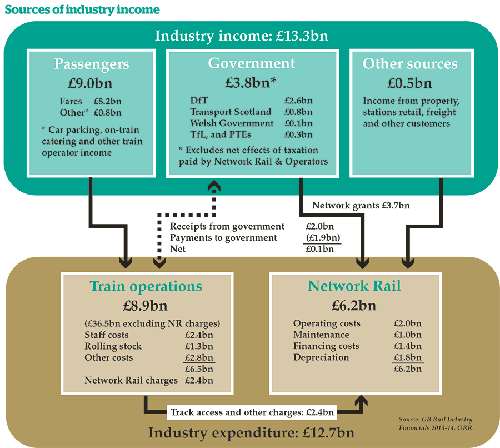 You can see from Chart 1 that Network Rail’s funding comes mainly from two sources: currently £2.4bn a year from the operators in the form of access charges (this broadly covers the cost of operating, maintaining and renewing the network), and £3.7bn a year of network grant (this is the cost of enhancing the infrastructure).
You can see from Chart 1 that Network Rail’s funding comes mainly from two sources: currently £2.4bn a year from the operators in the form of access charges (this broadly covers the cost of operating, maintaining and renewing the network), and £3.7bn a year of network grant (this is the cost of enhancing the infrastructure).
Receipts from government by train operators (in the form of subsidy) broadly equate to the income to government (in the form of premium payments). So we can conclude that the industry is today broadly covering the total cost of day-to-day operation, maintenance and renewal, but is not yet able to support the costs of developing the network to increase its capability and capacity.
There are two things in particular that I would draw from this. Firstly, there is a pressing need either to improve labour productivity in the industry and/or to reduce the net cost of each unit of labour. Secondly, there is a need to develop a longer-term infrastructure development plan phased over a number of years, and to develop the supply chain such that it can deliver these enhancements more efficiently.
On the wider front, the data highlights that this government’s enormous financial commitment to rail enhancement expenditure is really quite extraordinary. Transport, and rail transport in particular, has risen up the political agenda steadily over the past ten years or so, and this seems set to continue with the creation late last year of the National Infrastructure Commission, led by Lord Adonis.
So in addition to large-scale rail transport schemes for London and the South East (Crossrail and Thameslink now coming towards fruition, and Crossrail 2 being developed with a clear political mandate), with large fleets of new inter-city trains on order for both the East Coast and Great Western Main Lines (increasing capacity as well as making the offer to potential passengers more attractive than ever before), and with HS2 moving full speed ahead to improve capacity and connectivity on the main north-south arteries, in George Osborne we now have a Chancellor pushing significant investment through his idea of a Northern Powerhouse.
We can’t yet be sure how this concept will translate into ‘spades in the ground’, but the early signs of facilitating significant growth in rail travel across the North have been made very clear with the recent award of new franchises for both Northern and TransPennine Express. Both come with commitments to new trains and substantially larger fleets with much improved services, across the whole of the northern half of England.
This commitment from the Treasury to investing widely in rail growth during a time of austerity is really all the more remarkable when you consider that, from the politician’s perspective, we haven’t really managed to get our own house in order. Public Performance Measure (PPM) and passenger satisfaction are both currently on a downward trajectory, and we haven’t tackled the high cost base of the industry. My sister worked in the NHS all her life, and for the past few years they have been under the most immense pressure to save money in every direction. Do we see any of this pressure in our railways today? No we don’t - not at all, if we’re frank.
Now let’s take a look at some of the main areas where I would argue that the industry has not made as much progress as it should have done over the past 20 years, and ask ourselves why that might be so. There are four areas I’d like to briefly cover: Network Rail; open access; retailing, fares and ticketing; and stations. I’ll then propose some possible ways forward.
Network Rail: the 500lb gorilla
During 2014 Network Rail was reclassified, so that it is no longer a private sector company and is now effectively a nationalised infrastructure provider. This change was driven by the UK Statistics Authority, which considered that NR’s huge debt mountain of £35bn (and increasing steadily each year) was in reality underwritten by the Treasury. This meant that it could no longer be considered to be ‘off balance sheet’, and so ought to be brought back onto the Government’s books. At the time this was presented as merely a change in accounting convention, but in reality it has far-reaching implications for the whole industry.
Network Rail receives its income in five-yearly settlements determined by the rail regulator, allowing it to plan effectively over a five-year period. This arrangement of five-yearly Control Periods is enshrined in law, and so ought to be sacrosanct without further primary legislation. However, with the Treasury seeking to drastically reduce net government expenditure as part of getting the public sector debt under control, this is now coming under threat. So instead of having a secure and longer-term framework for enhancement investment, it rather looks as if it could become more short-term and variable.
Making matters worse is the fact that Network Rail is a large monolithic beast with insufficient incentives to encourage it to become more efficient and customer focused. Much as people might have loathed Railtrack, it did have shareholders who felt the pain and were able to influence its management. When Network Rail was operated as a Company Limited by Guarantee, between 2002 and 2014, it had neither the discipline of the market nor control by government. In effect, we had the worst of both worlds - what I have characterised as “the original 500 pound gorilla”. In other words, it sits exactly where it wants!
Now that Network Rail has effectively been renationalised, by having its debt reclassified onto the public books, we are seeing major changes to its governance. Out have gone the 50 or so Public Members, supposedly there to hold management to account, but in effect toothless. In has come the Government’s special director on the board, and a sponsor team for the organisation sitting inside the Department for Transport.
In this environment there is less and less chance of a stable long-term enhancement plan being created and adhered to over a period of five or ten years.
Open Access
The second feature of the post-1994 landscape that I want to examine is open access. The architects of the 1994 structure wanted free market competition to encourage innovation, to challenge the status quo, and to drive consumer choice. Thus a key feature of the 1993 Railways Act was the provision for open access operators to enter the system and challenge franchisees in open competition. The track access regulatory machinery was set up in a complex way to facilitate this.
In practice, genuine open access competition has so far been limited. There are currently just two free-market operators using the open access provisions - Hull Trains and Grand Central. Both operate on the East Coast Main Line and compete head-on with the franchisee. Services started in 2002 and have gradually grown so that today they provide more than one-sixth of all the long-distance services to and from King’s Cross.
They have moved from being unprofitable in the early years to being profitable today, with plans for further expansion. Last year Grand Central was awarded rights to run an entirely new group of services from Blackpool into London using the West Coast route, bringing open competition to another of our main lines.
These open access operators have undoubtedly been successful. And by providing new destinations and enhanced services to others, they’ve introduced more choice and increased the attractiveness of rail services. Passengers like them - there are very high levels of satisfaction recorded by the independent monitor - and they have definitely driven fares lower in areas where they compete directly with the franchisee. So what’s not to like?
There are perhaps three problem areas. The first is that they are not competing on a level playing field. By only paying variable access charges and being able to undercut inter-available fares at key stations such as Doncaster and York, they are able to effectively cherry-pick profitable parts of the incumbent franchisee’s business.
Nothing wrong with this as such, if we believe in a free market, except that the franchisee’s business depends on the forward revenue projections made at the time of the bid and on which the premium line is based. So with some volume pinched and yields squeezed, the franchise can move downhill easily.
This problem could be fixed by restructuring the access charges regime, which is under review ahead of the next five-yearly Control Period starting in 2019, and by tweaking the regulatory regime for fares.
The second problem is the financial consequence to the Government. The last East Coast franchisee estimated that open access was costing something in the region of £30 million a year off the premium, money that is lost to government forever and recurs each year.
But the premia paid by those franchises where revenues exceed costs helps to cross-subsidise the bits of the network where the reverse applies. Thus a shortfall in receipts from East Coast can cause less funding to be available to support rural services in other parts of the country.
Worse than this - and the third problem area - is that when government wants to invest to improve the capability of the route (as it has done in the last Control Period and is continuing to do in the current one), it has no guarantee that the benefits of the additional capacity and capability it is buying will be captured by its franchisee, and thereby recovered to pay for the investment made. This makes it difficult for the Government to specify and fund infrastructure capability upgrades.
Retailing, fares and ticketing
The third topic in my ‘what hasn’t gone so well’ list is retailing, fares and ticketing. The 1994 organisational model essentially attempted to preserve the network benefits, which were seen at that time to be most important for consumer protection.
See panel (right) for the provisions set in this area. With the benefit of hindsight, we can now see that the collective impact has acted to inhibit modernisation, add complexity, and impede innovation in this whole area. In many ways it has led to ossification of how things are done, with a very 20th century feel about it. Let’s explore a few outcomes.
Fares regulation has acted as a sensible brake on free market exploitation of the captive passenger base. But freedom in the non-regulated part of the fares system, coupled with differing policies followed by different franchisees, has led progressively over 20 years to a number of undesirable outcomes.
Firstly, season tickets have become under-priced, compared with full fare tickets. Secondly, fares are inconsistent between different pairs of stations on the same route, due to differing fare setters involved (this particularly affects cross-country routes). Thirdly, this has led to a situation where split ticketing creates an opportunity to significantly undercut the intended fare for a journey.
Added to this, we have to layer on the impact of TOCs developing ever more sophisticated fares that are specific to their franchises. Advance fares had been successfully introduced by British Rail, based on simplified versions of airline ticketing demand management systems, but one of the big success stories of the past 20 years has been the development of revenue management technology to exploit the growth of internet retailing - something that could barely have been imagined when the current framework was being designed.
So we now have an unwieldy and over-complex fares system, so complicated that really only a handful of experts truly understand it properly and can spot potential pitfalls as further changes are introduced into the mix. Certainly today’s fares system is one that the wider public manifestly does not understand, and nor should it ever be expected to. This results in much negative media coverage, and a rise in consumer protection interest from forces as diverse as Which? and the Office of Rail and Road (ORR).
Perhaps the worst impact, however, is that this acts as a disincentive to rail travel at all, with many people giving up on rail when faced with the complexity of buying a ticket and the lack of flexibility provided by affordable fares. How much latent demand is there for a simple, turn up and go railway network at an affordable price?
Looking at ticketing next, we see an even bigger problem, as the national rail network has collectively failed to keep up with emerging technology in this area.
Transport for London has led the way in the capital, with the refinement of zonal pricing to keep things simple for customers to understand, and the widespread adoption of Pay As You Go smartcard technology (branded as Oyster). More recently it has moved aggressively into Contactless payments via bank card, providing even more accessible ticketing for casual users as well as regular travellers. And just before Christmas 2015 it achieved the ‘Holy Grail’ of ticketing - the closure of its very last ticket office, at Upton Park.
Frankly, it’s amazing to see the progress that TfL has made on its unified system compared with the lack of progress in this area on the national rail network, where the client role is split between a multiplicity of organisations but where (arguably) the DfT has failed in its primary role as the directing mind for the industry.
On the national rail network we have had a number of attempts at smart ticketing around the country, but with no clear vision of what the desired end-state situation looks like.
We have a selection of Print At Home and barcoding systems running. We have various back office systems driving demand management and smart ticketing, none of which sit as Primary Franchise Assets so are not automatically captured at franchise changeovers. We have no flexible season ticket products available, despite the enormous growth in less-than-five-day-a-week commuting. We have varied designs of ticket vending machines, all of which so far pretty much replicate the National Fares Manual in their presentation of fares to the customer, and thus are absolutely impenetrable to all but the most frequent user. And most astonishing of all, we still have almost complete dependence on the humble magnetic stripe ticket, which has reigned supreme as the default ticket format of preference for over 30 years.
Contrast this with the Netherlands, where the O-V Chipkaart has been established comprehensively for some time now as the preferred ticketing method for all long-distance and suburban rail, as well as all tram and bus journeys across the whole country.
What is it that makes this essential difference between progress and ossification? I think it boils down to one word… vision. Obviously you need drive and commitment as well, plus the necessary tools and levers to use to translate that vision into reality, but at the heart of the problem on the national rail system is a lack of clear vision. The reason for this difference is that TfL and Nederlandse Spoorwegen (NS) have acted sufficiently as an intelligent client to develop and realise that vision in exactly the same way that DfT hasn’t.
Stations
The final topic in my ‘what hasn’t gone so well’ list is stations. Looking around the national network there are now some very fine stations - Reading, Birmingham New Street, St Pancras and so on. You can argue that these tend to fit into the category of ‘shopping mall with station attached’, but let’s acknowledge that at these very large station developments the railway family has been successful in making stations much more attractive to users, even becoming destinations in their own right when at their best.
Looking more generally around the network, stations are better maintained today than they were 20 years ago and have markedly better facilities - better quality customer information, better retail outlets, better and cleaner toilets, more car parking, and friendlier staff providing more help when needed… so far so good.
But many stations remain under-utilised, pared down to the bone. Some have had many of the best bits sold off for third party usage, leaving rail as the poorer party on the site. Others have ticket offices ploughing on with ever fewer customers to serve, required to stay open forever, coated in aspic by the provisions of Schedule 17.
All too often these stations are letting their local communities down. They are also letting the railway down - stations with poor facilities and few people using them are negative places that can feel unsafe and unloved, yet these are often the first contact point any member of the public has with ‘mother railway’.
Why are so many of our stations like this? Partly it’s about footfall - the larger stations will always be able to take care of themselves, as there is money to be made from lots of well-heeled people changing between modes of travel, while smaller stations will struggle to develop standalone business cases for development.
It’s also partly about the contractual framework in which all but the very largest of our stations now sit. This is one where the asset is owned by Network Rail, but the maintenance, repair and renewal obligations are split between Network Rail and the lead TOC for each station. Because the TOC tends to have a relatively short-term interest in the station, and because so far there has been no effective residual value mechanism for stations in franchise agreements, the tenant is not incentivised to take a long-term view.
Equally, from Network Rail’s perspective there are an awful lot of stations, and the best return will always be found at the biggest ones. Recent attempts to change this relationship, with the concept of the 99-year lease, have still to show much sign of beneficial outcome, although perhaps it is too early to form a judgement on this?
However, I believe that the biggest reason why the vast bulk of our stations are not fulfilling their true potential is once again down to a paucity of vision at the top of our industry.
In my view, stations should try to operate as vibrant places, full of life and at the heart of their local community. The best way to do this is to bring ancillary businesses onto the site so that they are always staffed and there are reasons to linger. A good way of doing this at the bulk of smaller stations is to combine the role of ticket office and station staff with running a shop providing the basics - hot drinks, newspapers as a minimum, with a bigger grocery offer at stations with sufficient footfall to justify this.
When I was running South Eastern Trains we had two stations using this model, which I inherited from Connex. The flaw in their approach was the tie-up with CostCutter, whose core market demographics were not the same as rail users in the South Eastern commuter hinterland. Thus the product mix wasn’t right, and so sales penetration was not as it might have been. The other problem we had was that the staff were all railway employees rather than normal shop staff. This meant that they came with a railway (rather than retail) mindset, as well as a much higher cost base.
This concept of a grocery store that sells rail tickets is widely rolled out in the Netherlands, where it seems to be successful. In the NS model the shop is privately run as a concession, and acts a bit like a rail ticket agent. What makes it work effectively is the very simple mix of rail tickets needing to be sold, with the result that product knowledge is vastly simplified so that ordinary shop staff can manage the work without the huge amounts of specialist training required in Great Britain.
The only surviving exponent of this ‘grocery-cum-tickets’ concept in the UK is to be found on Merseyrail. Here you can find ‘M to go’, introduced by Serco/Abellio in its 20-year franchise with the active support of Merseytravel.
The big problem with this application is that Merseyrail is still required to act as a full service provider of rail tickets and information, so in theory it could need to be able to sell a through ticket from (say) Hooton to Horsley, including handling Advance ticket bookings, seat reservations and so on. Of course, in practice people wanting these sorts of tickets either buy online or go to a large station such as Lime Street to do this.
If only Merseyrail could be relieved of this obligation, and be required only to sell Merseyrail zonal tickets and travelcards, the amount of training and knowledge required could be cut by 95%. This would enable the staffing of these outlets to be de-skilled, so that in future staffing could be provided by the concession operator, like at petrol stations.
I leave you to imagine just how much our station estate could be transformed if we could do deals like this on a much bigger scale, as the petrol retailers have done with their forecourts across the country?
To facilitate this requires some vision at the directing mind of our railways and a willingness to tackle the powerbase of the TSSA and the RMT, coupled with a simple regulatory change. That this hasn’t happened shows again how our government’s approach to rail is holding our industry back.
So, we’ve looked at the main structural changes that have taken place over the past 21 years, and considered some of the things that perhaps haven’t gone as well as they might have done.
I’d now like to assess features relating to the position the industry finds itself in currently, and then go on to suggest how things could change in the future.
Planning and using network capacity
Alliance Rail Holdings has two significant applications lodged with the ORR for new open access services. One is an hourly fast service between the capitals of Scotland and England (calling only at Newcastle), formed of tilting high-speed trains and which would require the franchisee’s trains to play second fiddle and be overtaken en route. The other is a two-hourly service via Leeds, which would eat into the franchisee’s prime market of West Yorkshire.
The existing franchisee has a fleet of new trains on order and an ambitious proposed new timetable that will use up much of the remaining spare capacity on the route. It needs to make its new timetable as attractive as possible - with fast, repeating pattern services - if it is to realise its income projections and be able to pay the premia it has promised to government over the next eight years.
Without this new timetable it will undoubtedly experience severe financial strain. There have already been two failed franchises on this Blue Riband route, and the Government will be desperate to avoid a third. Equally, the Government needs the proposed timetable to work because it ordered the new trains itself and instructed the franchisee to use them. The trains are on a long-term deal where their full use is financially committed for 25 years.
The proposed new timetable is predicated on a series of infrastructure upgrades funded by government through Network Rail in the current Control Period. It is not yet clear whether the upgrades will be delivered on time and whether they can be completed within the available funding. But even if the upgrade work gets completed, there is insufficient capacity on the route to allow all of the desired services to run.
To make matters worse, for the busiest part of the route (the last 70 miles or so into central London) the Thameslink scheme will add further trains and complexity to the service pattern, including over one critical (and shared) two-track section. The Thameslink timetable is tightly constrained by the need to funnel high-capacity commuter trains into the core section through central London. Furthermore, the DfT has instructed that Thameslink’s timetable slots should be regarded as fixed and the long-distance high-speed services be flexed around the commuter trains.
Network Rail, as the system operator, has the impossible task of trying to plan the timetable to meet all of the operators’ requirements while also being on the hook for operational performance, which is not good on this route. However, the decision on whether or not to grant the access rights is to be taken by ORR.
Thus the stage is set for institutional conflict. Whichever way the decision goes on the access rights, there are going to be serious consequences. And just think about how complex all this transactional stuff has become around changing a timetable! All that time and energy has both a real cost in pounds and an opportunity cost that is built into both the industry cost base and its barriers to entry.
The dogfight for paths on the East Coast Main Line has been a recurring soap opera over the past 15 years, and has consumed enormous energy from many industry parties. It has made planning a timetable to make the most effective use of increasing scarce capacity much, much harder than it would otherwise have been, and made the necessary collaboration between operators and Network Rail (so necessary to run a modern railway cohesively) much more difficult to secure. I believe that it has also served to inhibit development of the route, which would have improved its capability and capacity.
So I conclude that the desire to have open access competition to franchisees, which was at the heart of the 1993 legislation, has become incompatible with the letting and managing of long-distance franchises on a mixed traffic multi-operator railway. I think it would be possible to create a future state where the access charging regime for long-distance passenger services was put on a level footing, and a phasing out of franchising in favour of open access operation. This would need provision for appropriate premia to be paid to the railway authority, and for the protection of socially necessary but unremunerative services.
Concessions versus franchises
There has been a gradual move in Britain towards concessioning for urban railways as opposed to franchising. The key difference is that in a franchise, the franchisee operates on a net cost basis - in other words, it carries the full revenue risk and acts as an informed commercial business operating within a loose franchise specification, which typically sets out minimum train service and customer service levels and has fares and ticketing controls in it. Whereas in a concession, the client takes the revenue risk, and becomes the informed specifier of service levels, fares and so on, with the concessionaire operating on a gross cost basis.
The concessioning model seems to work well when there is a local public transport authority that considers rail travel as a key driver of the economic and social fabric of its community, and is willing to make the necessary financial and engagement effort to improve it. I guess it also helps to make the local case for change if the franchising authority is seen as remote and out of touch with local needs.
Thus we have seen a number of these introduced in Britain. All tram and light rail systems are operated on this kind of model, as is Merseyrail. In London, two parts of the heavy rail commuter system have been converted in the past few years to a concession model, and branded as London Overground. The results have been most impressive, both from a passenger perspective and for regenerating previously less well-connected parts of the suburbs. Other local authorities are keen to follow suit, notably Rail North and in Birmingham.
I reckon that this model works extremely well for urban and suburban rail within a significant metropolitan entity, with all parties happy. Even the contracting companies like it, as it provides steady earnings, albeit at a lower margin than a ‘full fat’ franchise. Given the strong political movement towards further devolution in the UK, surely this is an idea whose time has come?
Infrastructure
2015 was a turbulent year in Network Rail’s chequered history. The fuss really started over Christmas 2014, with two very serious overruns of major engineering works on main lines out of London. What made matters worse was that there was little warning of the overruns, and even less in the way of measures to cope with them when they happened. The result was a public furore that drew government ministers into the mire and got them seriously offside with the industry. The resulting investigation castigated Network Rail’s planning and execution of major projects.
Worse followed in the early months of 2015, when it gradually became apparent that Network Rail’s major programme of electrification and route modernisation was in serious difficulty over both cost and timescale. Following the inevitable programme reviews and much soul-searching, the Government very publicly had to postpone two major enhancement projects, one of which was politically very significant.
The fallout from this is continuing. The Government acted to strengthen its control over Network Rail, removing the hapless Richard Parry-Jones (who had no rail experience) and appointing a replacement chairman with relevant sector experience. And three separate government-driven reviews were initiated, two of which have now reported.
Sir Peter Hendy’s review of the investment programme for the current Control Period concluded that the paused schemes could be ‘unpaused’, thus bringing a new word into the railway lexicon and showing clear signs of political intervention to produce an acceptable outcome.
Dame Colette Bowe’s review of how the investment programme came to be agreed and funded, when it has since been shown to be unachievable, concluded that a variety of causes contributed to this. The most significant problem identified was organisational uncertainty over the role between DfT, Network Rail and ORR. She recommended that the role of these three players should be reviewed with clearer governance and decision-making frameworks put in place. But potentially the most significant review is the one ordered by the Treasury and being led by Nicola Shaw, on the wider question of how Network Rail should best be funded and organised. She is due to report before the spring budget at Easter 2016.
Funding
At the end of this year’s Comprehensive Spending Review, the DfT had agreed to a reduction in resource spending of 37%. This level of cutback is possible in the current economic climate of continued demand growth, but should there be a downturn at any time in the next four years it seems inevitable that Network Rail’s package of renewals and enhancements will have to be reduced.
At the same time the Government has a stated political imperative to drive economic development across the north of England, and quite rightly sees major improvement to the transport infrastructure as critical to achieving this. The Government is also committed to progressing HS2 during the lifetime of the current Parliament.
So at the moment we have a government using windfall revenue gains to balance its current spending, while being more committed than ever to capital spend on infrastructure enhancement projects. Whatever happens next, we can be sure that there will be enormous pressure placed on the rail budget, and anything that helps drive efficiency or make better use of resources should be welcomed.
Government’s role
Finally, let’s consider the Government’s role and capability in our industry. There are a number of problems with the way our government apparatus works in practice, and I speak from personal involvement with it at senior levels these last few years (through Labour, Coalition and Conservative governments).
The most obvious problem is one of the electoral cycle. The five-year term of governments is important for democracy but tends, in practice, to produce a short-term outlook. This is very unfortunate when substantial infrastructure investment is needed that obviously has very long timescales.
The Government should perhaps be congratulated for driving HS2 hard, despite the short-term pain it is producing for what can only be a very long-term gain. But this is an unusual approach, as much of the government machine is concerned with what is happening now and over a much shorter time span than HS2.
Secondly, the departmental mindset is primarily administrative rather than entrepreneurial, and the civil service mentality is to service Ministerial requirements first and foremost, rather than leading policy development itself. Fragmentation of responsibility means that the DfT is not even joined up inter-modally, never mind working seamlessly across government departments.
This leads to a number of undesirable outcomes. Senior civil servants tend to focus on short-term problems, especially crises that blow in almost weekly and which immediately rise to the top of the Ministerial agenda. Anything controversial is likely to be pored over in minute detail.
Good examples are which trains should call at which stations or how much performance buffer time should be allowed for in train schedules, but there are lots of other examples I could quote. Anything long-term or strategic tends to be pushed to the back burner.
Worst of all is the extreme dislike of taking difficult decisions - here the default position is always to delay, by asking for more information or referring matters up the hierarchy. No big decisions are ever made in a timely way, and the net result is that enormous intellectual time and effort is spent going round in circles, with opportunity lost in the process.
Railways at the crossroads
We sit today in a position where the ‘big ticket’ issues of today’s railway organisational structure - funding, open access, franchising, infrastructure management and operation, and the role of government - are all problematic. If you take all five together in the round, it seems to me that there is a once-in-a-generation opportunity to re-set our organisational model to give it a better chance to work more effectively.
Nicola Shaw’s review of Network Rail is looking at some big ticket issues, and she is making clear that she won’t restrict herself to consideration only of implications for Network Rail, where in her view structural change is also required elsewhere to solve the problem. So it’s possible that some of her ideas may overlap with some of my own. We also now have the DfT-led review of the role of ORR under way, and also due to report in March.
For me, it is plain to see that competition drives improvement and innovation, provided it isn’t stifled by the existing rules of the system it is plugged into. Equally, free market capitalism, red in tooth and claw, does not sit so well in an industry that has significant natural monopolies, severe capacity restrictions, consumes significant public funds, and requires extensive collaboration across its interfaces to make it work properly.
Today our railways are sitting at an important crossroads, and my question is: ‘Which way now?’ Here is my summary of the problems we are trying to fix:
- The Government is too closely involved in the minutiae of the day-to-day running of the railway. In doing so it has lost sight of its main purpose, which should be long-term vision, strategy and funding. It has also resulted in too many decisions being taken for nakedly political reasons, rather than for good economic ones.
- Network Rail is too big, and has too broad a set of responsibilities to cope with - system operator, network developer, infrastructure maintainer, major project manager, regulated utility, property company. Frankly, it does none of these well. And it can’t work out which out of the regulator, the DfT or the operators it should regard as its principal customer. All of them, plus the media and the end users, passengers and freight hauliers, want to be in the driving seat to tell it what to do. This is a recipe for chaos and loss of efficiency.
- Franchising as currently operated is unsustainable in the long term. Franchises are being tightly specified, but by a central government department that is not close enough to the market. Competition is between a small group of established players with little to differentiate them, and a race to the bottom on margins.
- The conflict between open access and franchising on long distance has become a festering boil that needs to be lanced.
- The approach to retailing, fares and ticketing is in need of overhaul.
- Stations need to find a new operational model, to enable them to be better developed.
- Finally, unit costs across the whole industry are just too high. Better incentives are needed to tackle these.
I think it is possible to develop a set of structural reforms that could, over a ten-year period, lead to a much more effective and better valued railway. The following set of changes would work best if taken as a package, as they tend to inter-relate.
Firstly, the role of government - in my view the Government should try hard to get out of the detail of managing the railway. This is always difficult as lots of government money is involved and railways are rarely out of the headlines. But central government ought to focus its energy on identifying what role it wants the railway to perform for society in the medium to long term, as part of an overall transport strategy, and should then seek to identify and then ring-fence the funding necessary to achieve it.
The actual year-to-year activity of network planning and access allocation should be handed to a separate arm’s length government agency, into which Network Rail’s current longer-term planning activities should be transferred.
Also transferred into this agency would be the specification, management and letting of inter-urban franchises, as well as access planning, both for timetabling and for disruptive engineering purposes. Matters requiring cross-industry consistency - for example, fares and ticketing systems - would also be overseen within this agency. It would need to be run by well-paid, competent people with the requisite railway, commercial and planning skills.
Taking these functions out of Network Rail means that it predominantly becomes a delivery organisation. There are issues about property and stations, but these are secondary considerations and unlikely to be mission-critical for the railway. Delivery in this context means major project execution, day-to-day renewals and maintenance, and management and operation of the network.
Given that all the cross-boundary issues would be taken care of by the government agency, it then becomes possible to carry out the delivery works in different ways in different parts of the country.
Firstly, the organisation could be broken up into geographically-based regional units, of quite different sizes as appropriate. Network operation could be handled separately or combined with any of maintenance, renewals and enhancements. The important thing is that it could be done differently in different parts of the country.
This would facilitate introducing competition in a controlled manner into a more mature railway structure. Elements of the network or activities on it could be sold off, concessioned or continue to run in the public sector. On some parts of the network vertical integration would become possible, if considered desirable. One example where this could be made to work well would be the suburban electrified network of Merseyrail.
The important thing about this concept is that it wouldn’t have to be a ‘one size fits all’ solution. Rather, it would be an enabler to do things differently in different parts of the network to best meet the specific local needs. So how things were done locally would become a second order decision within a national framework with interworking standards.
Through a combination of these changes it would become easier to track and encourage efficiency, because comparative benchmarking would become possible for the first time. Such an arrangement would encourage competition between different parts of the network to innovate and drive down unit costs. I think it would also make the regulator’s job in accurately determining the level of funding required more practicable, perhaps for the first time ever?
Turning now to train services, three broadly different types of market are reflected in passenger franchises in the British model as it is today: suburban, inter-city and inter-urban. Rural routes are represented today in all three different types of market-led franchises. Each of these markets possibly can be managed in a different way in future.
Where local or regional transport authorities already exist, or can be cohesively formed, then I would advocate the devolution of client responsibilities for relevant service groups to these authorities, provided they are prepared and willing to take these on. The obligations should be transferred, along with a financial dowry equivalent to the current net cost of the services transferred.
How services are then taken forward becomes a matter for the local authority concerned, to be considered in the wider objectives relating to public transport and other economic and social objectives. But I would expect to see more movement away from revenue risk franchises towards gross cost concessions. The West Midlands and parts of the current Northern franchise serving the Manchester, Leeds and Newcastle City Regions would all benefit from such an approach.
In Scotland, transport is already devolved. Transport Scotland has let a hybrid franchise with revenue risk allocated to the franchisee but with tight specification over services and service development sitting with the client. The arrangement also contains a heavily incentivised service quality regime, to ensure satisfactory delivery of the required quality of service. This arrangement seems to work well, and I see no reason why it should not be extended to Wales and possibly to other distinct service groups in other parts of Britain. Rural services in Devon and Cornwall, and suburban services in the Bristol and Avon area, might all fit this category.
In London I would see further expansion of the changes already made, whereby suburban services that are loosely within the Greater London area are operated as concessions managed by Transport for London. This would leave the rump of the existing commuter franchises serving the Home Counties, and elements of other franchises to be reshaped as premium paying franchises, but managed by my embryonic government rail agency.
This leaves the inter-city franchises. Given that open access is enshrined in primary legislation, given that it has demonstrably created fresh competitive impetus to improve the customer proposition, and given that it is clearly here to stay, it would be absurd to suggest a future without it. So the incompatibility between open access and franchising that I have discussed earlier should perhaps be resolved by a gradual replacement of long-distance franchises by open competition with a fresh financial model, but using open access provisions.
This could be trialled on the East Coast Main Line first, where open access competition is already well established, and could be planned to start from when the existing East Coast franchise expires naturally in 2023. This gives enough time for the necessary precursor activities to take place:
Firstly, for a revised regulatory and charging framework to be devised. Secondly, for unremunerative yet socially necessary elements of the route’s services to be identified and a protection mechanism devised. And thirdly, for the supply side market to develop, and for its potential players to refine their business propositions.
Genuine open competition among players on a level playing field will act to create innovative new services and new service concepts, and to reduce unit costs dramatically. We have seen this in the airline and coach sectors, and there is no reason at all why it shouldn’t be transferable to rail.
The biggest issue will always be designing a timetable that works and provides reasonable connectivity as well as resilience. But with network development and timetabling transferred to my proposed government rail agency, which will also receive receipts from the competing operators for a share of revenues over and above the genuine costs of day-to-day track access, there is the incentive to create longer-term capacity improvement plans, and enough time between now and then to develop workable timetables.
Conclusions
A need by government to reduce the amount it subsidises the railway, the requirement to do something to solve the Network Rail problem, and the obvious political demands for further devolution away from central government, coupled with the success of concessioning and open access models in Britain today, suggests that the time is ripe for a structural shift to enable a revised railway organisational model to emerge - one which has appropriate levels of competition within it to drive improved value for money for governments and consumers alike, and which enables the railways of Britain to provide greater value to the communities served.
Read the peer reviews for this feature.
Download the graphs for this feature.
 Peer review: Richard McClean
Peer review: Richard McClean
Mobilisation Director, Arriva Rail North
Michael Holden has deployed his unparalleled experience within the rail industry to lay out with clarity a comprehensive ‘tour de horizon’ of the current state of affairs.
It may be tempting to take issue with the route Michael has taken in his analysis and with some of his specific assertions - in particular the oft-quoted but never substantiated £30 million ‘lost’ premium and potential disbenefit to subsidy to rural services, laid at the door of the small but successful open access operations that have managed to find a place on the network.
But suffice to say that the only detailed assessments actually done on these points suggest that the competitive spur the innovative and hugely popular open access operations have given the otherwise monopoly inter-city operators has led to accelerated growth of the overall market at the limited points of interaction.
In addition, it is worth remembering that the open access services specifically serve and have opened up connections to communities previously poorly served by rail, and actively abandoned by these same monopoly inter-city operators.
However, despite these points of analysis, I find his conclusions sound and his perspectives of the current priorities for focus and action to be uncontestable.
It is always useful to establish the foundations of “how did we get here?” while attempting to address what is going well and where further improvements can be made. Clearly the successive failures of a range of structures for the infrastructure manager and the relentless focus on “competition for the market” are pivotal factors in any such assessment. Keeping these in mind gives us a good starting place when considering the most appropriate areas for action.
Michael is right to highlight areas where improvements need to be made - there is no doubt that rail fare structures often leave passengers confused, while some stations have not received the significant improvements in quality that are evident in many rolling stock fleets. However, progress is most often made by reinforcing the momentum of improvement in areas where substantial progress has and continues to be made. Indeed, this approach is likely to sweep up the problem areas, too. With this in mind, there are many areas where the industry should be proud:
- The dependence of the industry on taxpayer subsidy to cover the cost of day-to-day operations has been broadly eliminated.
- More passengers are travelling by rail every year, with use growing faster than basic capacity increases.
- Rail is increasingly seen by policy makers as an enabler of personal, regional and economic growth.
Central to these trends have been a number of factors that are worthy of reinforcement in order to drive further progress:
- The developing relationship between local operators and devolved transport bodies is becoming increasingly effective, as can be seen in London, Scotland, Wales and (soon) the Northern Powerhouse. The key factor is a close working relationship between a local policy maker and a dedicated professional operator.
- The emergence of commercially viable inter-city operators with a strong direct relationship with passengers, although these operators are too often being held back by the unnecessary and overly prescriptive service specifications which are then minutely managed by DfT.
To really unlock these positive factors it will be necessary to:
- Support DfT in moving into a role establishing overall industry policy and objectives, and out of the day-to-day oversight of frontline operations.
- Enable DfT to properly let go of the management of local public service operations, and empower the devolved transport bodies being established to fill this space.
- Free the commercial operators from the constraints of their franchises to maximise the value they can deliver from their use of the network, and establish mechanisms to allow these commercial operators to contribute directly to the costs of providing the network.
- Restructure Network Rail into a series of locally responsive delivery units with an overarching planning entity.
To enable this structure to work most effectively, it will be necessary to ensure that passengers using the commercial inter-city services have real choice between alternative operators, by breaking up the current inter-city franchise monopolies. This should be possible by restructuring the current operations into three or four equal-sized sub-units, with immediate value realised through a trade sale generating immediate benefit.
These new free and commercial businesses, working with the devolved regional transport authorities, would be able to address Michael’s concerns regarding NR’s inability to identify and manage route capacity, deliver infrastructure investments, and leverage much-needed third party investment into the network.
 Peer review: Paul Plummer
Peer review: Paul Plummer
Chief Executive, Rail Delivery Group
The ‘railway problem’ that Michael Holden opens with has been turned on its head. We are no longer managing long-term decline, as had been the presumption 20 years ago. Rather, we are dealing with consistent and unprecedented growth in the use of the rail network to support our economy.
That growth has focused the attention of train operators on the need to improve customer experience and specifically deal with the need to change outdated practices. For example, ambitious proposals to modernise train tickets in the next three years will finally send the familiar but outdated orange paper ticket on the way to retirement, as smart and mobile devices become the norm.
Our piloting of a flexible barcoded m-Ticket covers more than 230 stations in the north of England, Scotland and the Midlands, allowing people to switch between different train operators’ services on a single journey. More than 40,000 have been bought so far, but we need to do more, so we are working with the card payments industry to explore how people outside London could use contactless credit or debit cards as a ‘token to travel’.
Michael says season tickets are under-priced. They can be great value for money, especially in terms of the wider employment, business, housing and leisure opportunities that they enable. But that view won’t necessarily be shared even when the most recent fares increase (at 1.1%) was the lowest in six years. We must be seen as reformers - creating a system that is simpler, more flexible around passengers’ individual needs, and easier to understand. Fundamentally, it needs to be a system that passengers trust. The reality is that increasingly, revenue can and should fill the funding gap - and that government funding will go more directly and transparently to subsidising investment for services that would never be commercially viable but which are socially, economically or environmentally important.
We also need change in the parts of the railway to which our customers have less direct exposure. An open and increasingly busy network means that difficult decisions have to be made about when to carry out renewals and enhancements. The Rail Delivery Group works to enable railway companies to make choices that optimise the trade-off between weekend closures or longer possessions at other times. Neither is ideal, and what we need is the right balance.
On the bigger questions of the railway’s finances and its efficiency, we want to not just cover the total cost of day-to-day operation, maintenance and renewal, but also support the costs of developing the network to increase capacity and capability. When extra money is created, government has greater flexibility to decide how much it wants to invest in improving services and at what level it wishes to set regulated fares.
Michael is concerned that Britain’s stations aren’t receiving the attention they often deserve, with much attention rightly having been focused on infrastructure and rolling stock. While Birmingham New Street, Manchester Victoria, Reading, London St Pancras, London King’s Cross and Edinburgh Waverley have all received huge investment in recent years, we know that a long-term plan is needed for those medium-sized and smaller stations in towns and cities across Britain that haven’t had the attention they need, for various reasons. But the detailed thinking that we need has been happening - our Vision for Stations is on the RDG website, and we are working hard to embed it in the thinking of the industry and other relevant partners. We want Britain’s stations to be inclusive and welcoming, and to encourage everyone to travel by rail. It’s a vision that will be enabled by those working at the station, by the innovative use of technology, and by the involvement of the communities those stations serve.
Michael rightly points to the inter-relationships between the many challenges facing the industry and the various reviews currently under way. The industry strongly supports the changes being made within Network Rail to devolve accountability locally to the Routes within a national framework, supported by an effective system operator with a strong and confident regulator. The Shaw Review provides an opportunity to look at these issues and gain support for the way forward over the next few years.
The RDG will do everything it can to help railway companies to be successful in delivering better outcomes for passengers, freight customers and taxpayers. Our priorities are around improving punctuality and value for money, while modernising ticketing and improving door-to-door journeys.
We also need to improve industry structures to enable excellence, and to plan better for the railway’s future - whether that is manifested in HS2, the Digital Railway, new rolling stock or the challenges of climate change. And as with ticketing and fares, we are informing the Government’s choices on franchising and the role of open access operators (the RDG’s members have business in both types of operation). Above all, to achieve what everyone wants from the railway, we need a clarity of accountability, with a clear line of sight to end customers.
 Peer review: David Sidebottom
Peer review: David Sidebottom
Passenger Director, Transport Focus
What needs tackling on the railway? Everyone has an opinion on this. We talk to huge numbers of rail passengers (about 80,000 this year), plus a huge number of stakeholders - people working in the rail sector from the front line to the chief executive. I am regularly told that the key issues for passengers are overcrowding, unreliability, bikes on trains (for and against), trackside litter, visible staff, ticket prices and having your ticket checked. Take your pick!
Michael is right in that, broadly, passenger satisfaction is high. Our most recent National Rail Passenger Survey showed a slight increase in overall rail passenger satisfaction to 83% across the country, reversing previous declines. However, the overall score for commuter satisfaction was 76%, compared with 85% for business and 90% for leisure travellers.
When we asked passengers about their priorities for future improvement, at a country-wide level we found that value for money continues to top the list. We know from other research that when passengers are answering this question they are, of course, focusing on the price of their ticket. However, they are also taking into account the service basics of getting a seat, punctuality, frequency and how delays are dealt with. There is then the fact that priorities change by train company, route, season, where you got on (a seat is a luxury on some journeys, an absolute necessity on others) and many other factors.
What rarely comes up is the structure of the railway - who runs the network or the individual train company. The name Railtrack provokes shudders, but few outside of the industry could even tell you who controls Network Rail.
A long time ago we did some focus group research with passengers about what they would like to see from industry structures. Once passengers had recovered from the shock of understanding just how complex the industry is, they came forward with powerful points.
Above all else, they wanted to see improvements to their rail services - any review or change to structures or processes must focus on how to achieve this. They wanted a clear sense of strategic direction and the assurance that ‘somebody’ has a strategic vision for the railways. But they also wanted a sense that there was ‘someone’ in charge when it comes to the delivery of services to the passengers.
It would be interesting to re-run this work to see what has changed of late. But we think the message remains the same: think about structure if that’s what it takes, but the top priority is delivering a service that meets passenger needs.
Huge amounts of money are being invested in the railway, but the headlines are all about disruption and delay. This is a prime opportunity to look at lessons learned from projects such as the Bath line closures, which benefited from involving passengers right from the start in the planning, giving them realistic expectations of the ‘pain’ to be endured during delivery, and compensating them for particularly inconvenient periods.
In this way, the conversation will remain focused on the important issues of what passengers want or need - and not internal industry wrangling over who does what.


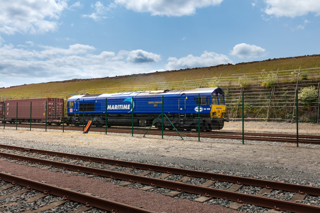
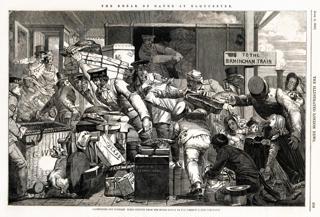
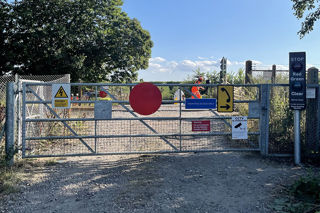
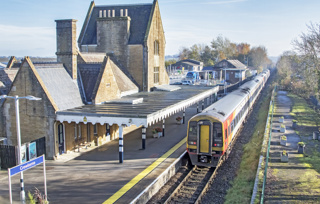
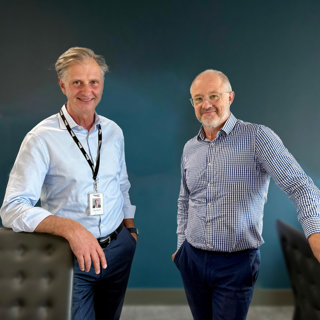

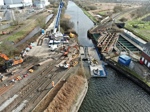







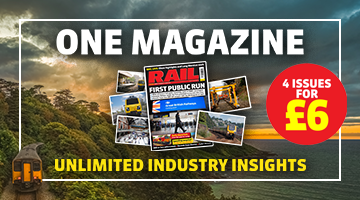

Login to comment
Comments
No comments have been made yet.